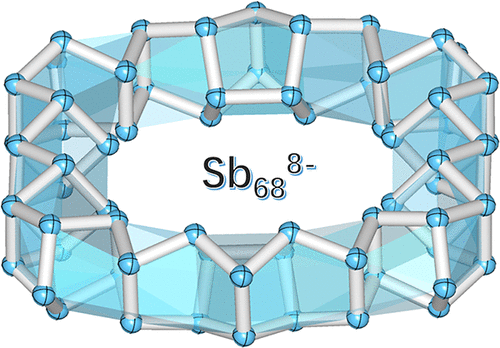Deliberately designed cyclic compounds, particularly those composed of pure elements, have emerged as a key focus in synthetic chemistry, attracting widespread interest. Previous studies have underscored the significance of cyclic carbon-based molecules and nanotori materials. Surface synthesis techniques have been employed to generate cyclo[n]carbons (Cn, n = 10, 13, 14, 16, 18, and 26), and the electronic structures of these molecules were elucidated through atomic force microscopy and theoretical calculations. These studies confirmed the aromaticity of C10, C14, and C18, while C16 exhibits a double antiaromaticity. Additionally, ring-like fullerenes, commonly known as carbon nanotori, represent a significant category of single-wall carbon nanotubes (SWNTs). These investigations into the theoretical predictions, synthesis, and applications of carbon nanotori with various nuclearities have consistently captured significant interest. In particular, there has been a focus on exploring the feasibility of carbon nanotori for encapsulating chains of metallic atoms and their potential use as nanoscale oscillators in nanoelectromechanical systems.
In contrast to carbon, molecular compounds composed of heavier group 15 elements, such as P, As, and Sb, exhibit limited stability due to the increased reactivity of their lone electron pairs. This high reactivity has posed a significant challenge to the synthesis of corresponding cyclic compounds, which has remained largely elusive. Interestingly, theoretical investigations have highlighted the energetic stability of such inorganic cyclic compounds. For instance, a series of cyclic compounds of Pnm (Pn = P, As; m = 80-360), which are composed of recurring realgar-type Pn8 and Pn2 moieties, have been theoretically predicted. Recently, employing chemical vapor deposition (CVT) within carbon nanotube reactors has emerged as a practical method for synthesizing linear or ring-shaped phosphene and arsenene entities. Cyclic phosphene was synthesized within carbon nanotube nanoreactors using CVT and reaction assembly techniques. However, employing multiwalled carbon nanotubes as protective carriers for the embedding of such ring systems has become essential, presenting ongoing challenges for their precise structural characterization. As a result, there are still no concrete examples known for the synthesis of pure-element inorganic cyclic compounds in the condensed phase. The s2p3 electron configuration of P, As, and Sb atoms achieves stability when it attains an eight-electron closed-shell configuration, promoting the formation of grid-like covalent structures in the condensed phase, thereby hindering the synthesis of cyclic compounds. In prior research, various chain-like structures, including P162–, P213–, P264–, and As213–, were synthesized using techniques such as the cleavage coupling of white phosphorus and oxidation-facilitated fusion of Zintl ions. By delving into synthetic strategies for these clusters, it is envisaged that employing appropriate oxidants for further oxidation of these chain-like clusters could facilitate the formation of cyclic structures or even larger chain-like structures. These findings suggest that antimony may also have the potential to form analogous structures. However, until now, there have been no documented successful examples of related polyantimony clusters experimentally. This may be attributed to the robust metallic feature of Sb and the lack of identified mild and compatible oxidants.
Recently, Zhong-Ming Sun’s group have made the isolation and characterization of a structure-defined, pure antimony-based nanotorus, Sb688–, introducing a new approach for producing nanotori structures. By using C60 as a weak oxidant to fuse the Sb73– cages together with the formed K(18-c-6) species, an unprecedented ring structure resembling a carbon nanotorus was observed. According to quantum chemical calculations, the band gap suggests a relatively high level of stability. CMO and AdNDP analyses reveal the presence of s-type lone pairs and 2c-2e σ bonds, while also indicating that the 3c-2e σ bonds effectively saturate the eight two-coordinate Sb atoms, ensuring each antimony atom attains a stable three-coordinated state. These findings are further validated by ELF analysis. The complete molecular surface coverage with σ bonds suggests that Sb688– could potentially function as nanomaterials akin to semiconductor-like antimony nanotubes. Additionally, CMO analysis indicates that a section of delocalized orbitals is located within the inner region of the nanotorus, containing a cavity with a volume of 14 Å3. This characteristic indicates its potential application in encapsulating chains of metallic atoms or in investigating the optoelectronic properties of metal clusters confined in a manner analogous to molecular sieves. Research on its relevant performance is ongoing. Relevant achievements were published in J. Am. Chem. Soc., 2024, DOI: 10.1021/jacs.4c09102.
